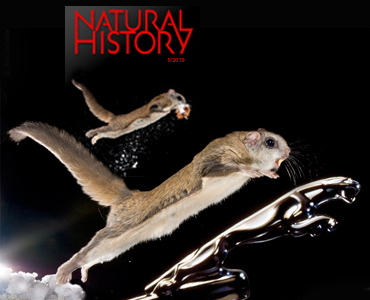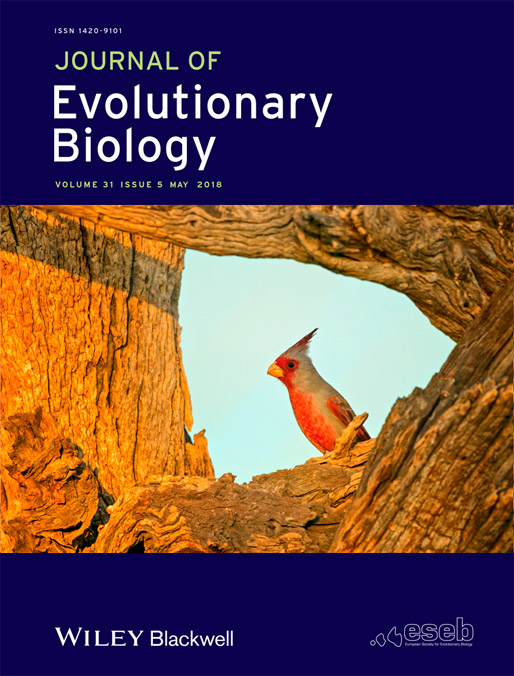Origin of the Fittest: Natural History
Having evolved when old-growth deciduous forests
covered Arizona deserts, the uniquely arboreal grey fox
is clinging to its ancient adaptations.
Read more: BBC Wildlife 31:62-67
covered Arizona deserts, the uniquely arboreal grey fox
is clinging to its ancient adaptations.
Read more: BBC Wildlife 31:62-67
Origin of the Fittest: Species interactions
Cycles of controls drive evolution
Read more in Nature Communications 10:1596
Read more in Nature Communications 10:1596
Origin of the Fittest: Evolutionary transitions
Stress reconciles evolvability and robustness
Read more in Nature Communications 11:3254
Read more in Nature Communications 11:3254
Origin of the Fittest: Development
Modular and emergent core processes are regulated
by conserved growth factors in house finch beak development
Read more in Quantitative Genetics in the Wild, pp. 177-189
by conserved growth factors in house finch beak development
Read more in Quantitative Genetics in the Wild, pp. 177-189
Origin of the Fittest: Biomechanics
Discovery of a novel way of flying in squirrels illustrates a crucial difference
between human engineering and evolutionary innovations
Read more in bioGraphic (Cal Academy of Sciences) Jan 2017
between human engineering and evolutionary innovations
Read more in bioGraphic (Cal Academy of Sciences) Jan 2017
Origin of the Fittest: Coexistence
Cycles of coexistence with wolves shaped
the legendary versatility of coyotes
Read more in BBC Wildlife 31(3): 46-54
the legendary versatility of coyotes
Read more in BBC Wildlife 31(3): 46-54
Origin of the Fittest: Species Accounts
Origin of the Fittest: Genome evolution
Origin of the Fittest: Biodiversity
Our photos on buildings in Tucson's downtown to advocate
protection of biologically unique areas and celebrate bat's annual migration.
Read more in Arizona Magazine (Fall 2016): 61-63
protection of biologically unique areas and celebrate bat's annual migration.
Read more in Arizona Magazine (Fall 2016): 61-63
Origin of the Fittest: Structure
Birds prune and streamline the ancestral carotenoid network.
Read more in Biology Direct 10 (45): 1-22
Read more in Biology Direct 10 (45): 1-22
Origin of the Fittest: Adaptation
Empirical test of the Baldwin effect
Read more in Phil. Trans. Roy. Soc. 364: 1125-1141
Read more in Phil. Trans. Roy. Soc. 364: 1125-1141
Origin of the Fittest: History
Origin of the Fittest: The process
Origin of the Fittest: Biodiversity
Origin of the Fittest: Mechanisms
Molecular and cytological mechanisms of sex ratio adjustment
Read more in Phil. Trans. Roy. Soc. 363: 1675-1686.
Read more in Phil. Trans. Roy. Soc. 363: 1675-1686.
Origin of the Fittest: Stress
Developmental integration of stress-induced plasticity in shrew jaws
Read more in Am. Nat. 163: 868-879
Read more in Am. Nat. 163: 868-879
Origin of the Fittest: Chance and Contingency
Origin of the Fittest: Structure
Subsampling of full pre-existing network is a dominant mode of avian carotenoid evolution
Read more in J. evol. Biol.31: 764-772
Read more in J. evol. Biol.31: 764-772
Origin of the Fittest: Form and Function
Intra-ovarian growth dynamics links sex-determination
and sex-specific resource allocation in birds
Read more in J. Evol. Biol. 21: 449–460
and sex-specific resource allocation in birds
Read more in J. Evol. Biol. 21: 449–460
Origin of the Fittest: Life history
Evolutionary transitions in life history, behavior, and morphology
Read more in Proc. Roy. Soc. B. 283 (1831): 201604031289
Read more in Proc. Roy. Soc. B. 283 (1831): 201604031289
Origin of the Fittest: Conservation
Bringing the world's largest swan from near-extinction
Read more in National Wildlife 56 (2): 38-42.
Read more in National Wildlife 56 (2): 38-42.
Origin of the Fittest: Behavior
Origin of the Fittest: Adaptation
Origin of the Fittest: Physiology
"Homeostatic hitchhiking" behind the evolution of complex adaptations.
Read more in Integr. Comp. Biol. 53: 913-922.
Read more in Integr. Comp. Biol. 53: 913-922.

7 May 2024
At the ceremony at University of Arizona Faculty Senate, Carmen Sánchez Moreno receives 2024 William S. Bickel Outstanding Undergraduate Original Research Award for her project "How do uniformly distributed cells give rise to organized structures in multicellular development?". At associated symposium in the College of Medicine, Carmen introduces her approach to this major question.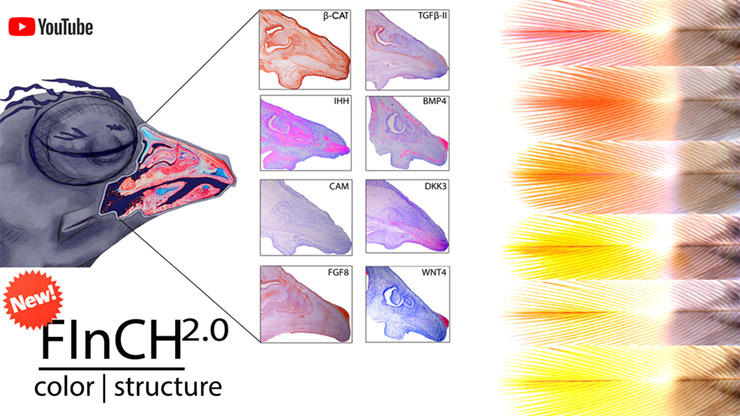
23 April 2024
Cody Lee and Carmen Sánchez Moreno, publish a software for automated high-throughput whole-slide multiplex measurements of transcription factors and associated cell morphology in growing structures. The program simultaneously integrates data at multiple scales - from cells to the whole structure, accounts for ontogenetic transformations, and can be adapted to many biological color measures (e.g., feather pigmentation). Comes with a viral! YouTube tutorial.
20 April 2024
The American Society of Naturalists elects Renée Duckworth (of the Duckworth Lab fame) as its Vice President. Renée will serve until 2027. Here is Renée in her grad school days.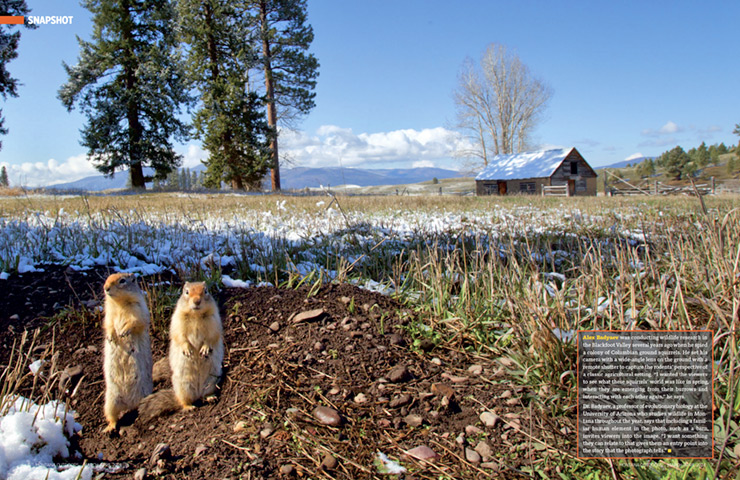
1 March 2024
Our "Morning Chat" photo, that debuted as an Order Rodentia opener in our "Mammals of Montana" book is featured as a double spread in the Spring 2024 issue of Montana Outdoors with the caption perceptively pointing often noted "human dimension" style in nature photography. UPD: The photo is now the header of Fish, Wildlife and Parks website for the months of May and June.
16 February 2024
Navalny | Навальный.
10 January 2024
The lab receives "Population genomic inference on demographic histories" grant to make sense of house finch recent colonization of Northwest. Debo Das joins the lab as the eighth G.G. Simpson Postdoctoral Fellow. Early on Debo developed a novel method of gene network reconstruction (PNAS, PLoS Comp Bio, Mol Systems Biol) and a new approach to phase-dependency of cell signaling (Science), and then, after a stint as bioinformatician at Lawrence Berkeley Lab, Cold Harbor, and AstraZeneca, saw the light and came back to finches.
15 December 2023
Brendan Baker joins the lab to investigate genetic and cultural aspects of song syntax evolution across house finch populations, focusing in particular on ML methods of annotation of novel elements in song spectrograms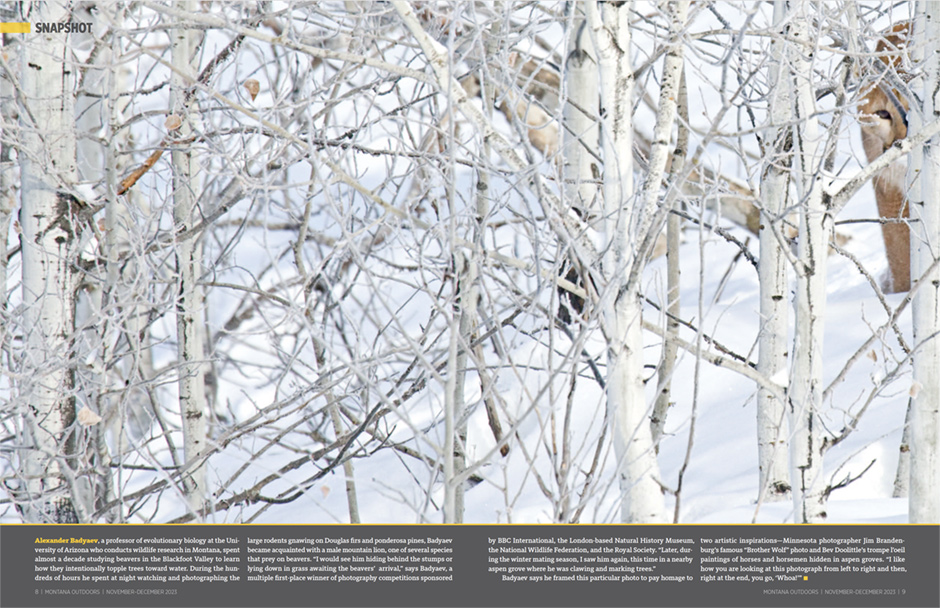
1 November 2023
Our "Aspen Encounter" photo, that debuted in our "Mammals of Montana" book, and featured in National Geographic and BBC Wildlife, is a double truck spread in the winter 2023 issue of Montana Outdoors. Nice caption too...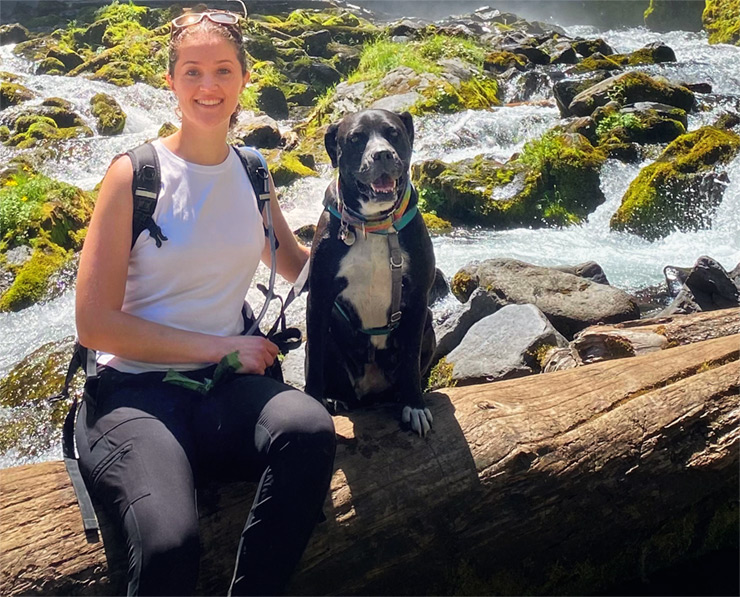
1 October 2023
After working in our field populations for two seasons as an NSF REU fellow Kate Walker joins the lab to study structural and ecological determinants of eggshell porosity, capitalizing on one of the largest within-species sample collections assembled in the lab.
1 June 2023
Natalie Nunn joins the lab to run NSF LTREB Arizona site and to conduct her thesis research on modes of social transmission in Arizona house finch populations.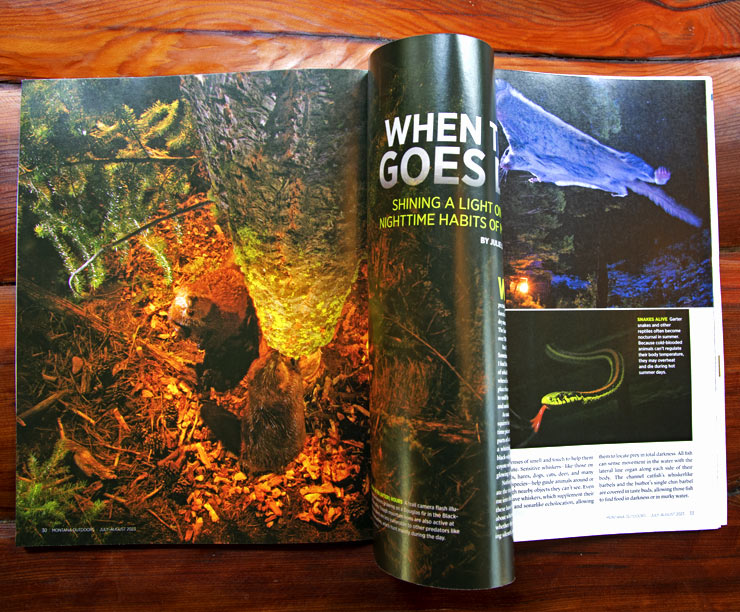
15 May 2023
Montana Outdoors cover essay features our photoseries of nocturnal behaviors of beavers and flying squirrels.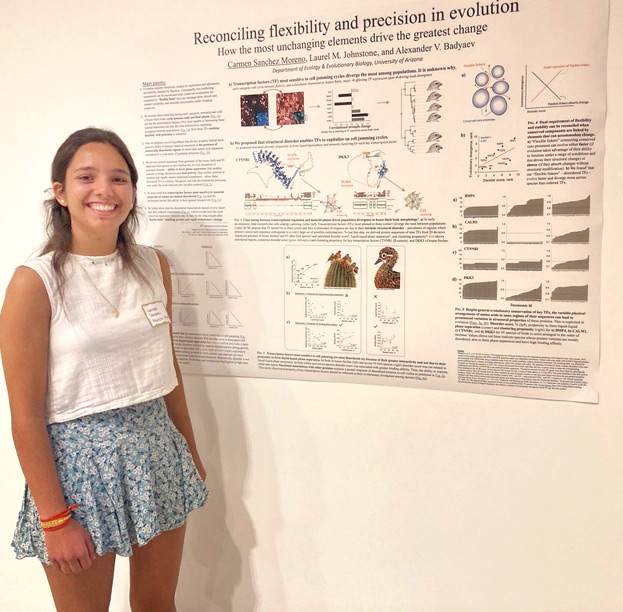
20 April 2023
Analyzing biophysical properties of transcription factors from de-novo sequenced house finch populations (and then doing the same for a hundred more bird species), Carmen Sanchez Moreno discovers a mechanism that enables these most conserved elements regulate minute evolutionary adjustment. Major paper to come…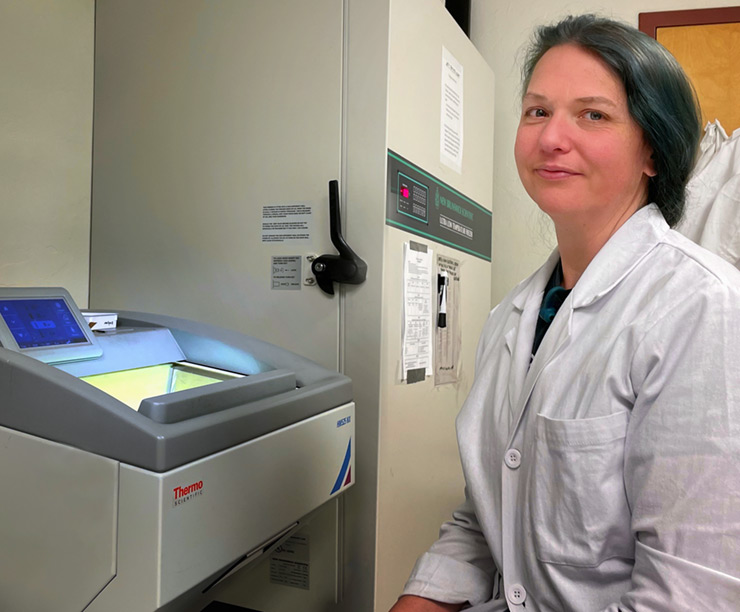
1 March 2023
Tiffany Bledsoe joins the lab to lead two new projects on developmental bases of heterochrony in avian tissues, capitalizing on her expertise in both histological and molecular techniques.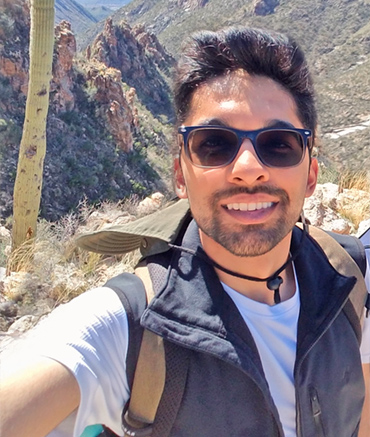
28 February 2023
Ali Shaikh receives the 2023 EEB Outstanding Senior Award!! The award recognizes Ali's scientific contributions to the lab's new cell biology projects, and confirms, yet again, the Three-Year Rule, according to which the Lab invariably produces an Outstanding Senior every three years: Rosetta Mui (2003), Jerod Merkle (2006), Laura Stein (2009), Ellen Ouellette (2012), Victoria Farrar (2015), Sarah Davis (2017), Cody Lee (2020), and now the lab's eighth Outstanding Senior—Ali Shaikh (2023). Stay tuned for 2026...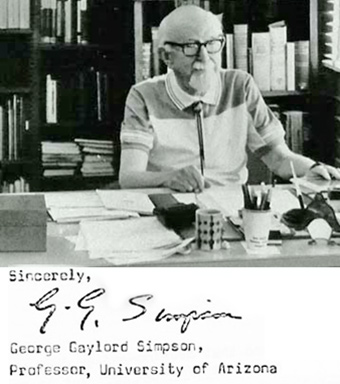
11 January 2023
The Lab announces availability of 2023 G.G.Simpson Postdoctoral Fellowship —established in honor of Prof. G.G. Simpson's work at our department— to support a productive and creative scientist to work on outstanding evolutionary problems of their own choosing. Details of application are here.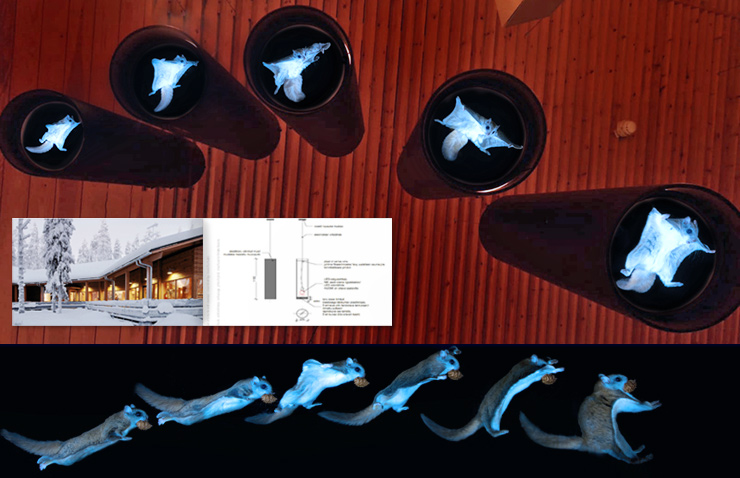
15 December 2022
Commissioned by Finnish National Parks and designed by an Estonian exhibition company Motor, our flying squirrel photo series is now a large light installation in a Nationalparks.fi visitor center. All payments transferred to the Ambulances for Ukraine Fund.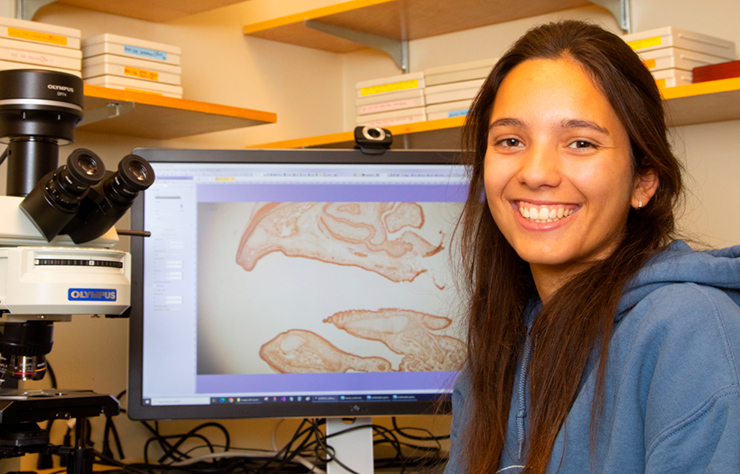
1 December 2022
Carmen Sanchez Moreno is awarded Fellowships from The Herbst Endowment for Innovation and The Science Dean’s Innovation Fund for her proposal“Investigating the origins of scaling in development” and joins the lab. Carmen’s research — at the interface of physics and cytology — explores the molecular mechanisms by which mechanics of cell phase transition affects gene activities in early development.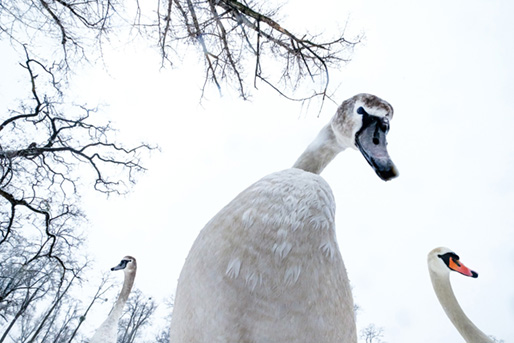
11 October 2022, 19:00-1:00 BST
At a customarily stunning Wildlife Photographer of the Year Award Ceremony at Natural History Museum in London, we watched our megatalented (1, 2, 3) lab alumnus — Mateusz Piesiak— receive the 2022 Rising Star Award. Of course, Mateusz's star has rised a while back, starting with his 2011 Young Photographer of the Year title, followed by his joining the Lab's Montana projects two years later, at 17. Alex Badyaev also received an award for his photo of Arizona's most feared mammal (also here). Coverage in The Atlantic, CNN, Newsweek, The Guardian, National Geographic, NPR, MSN, others).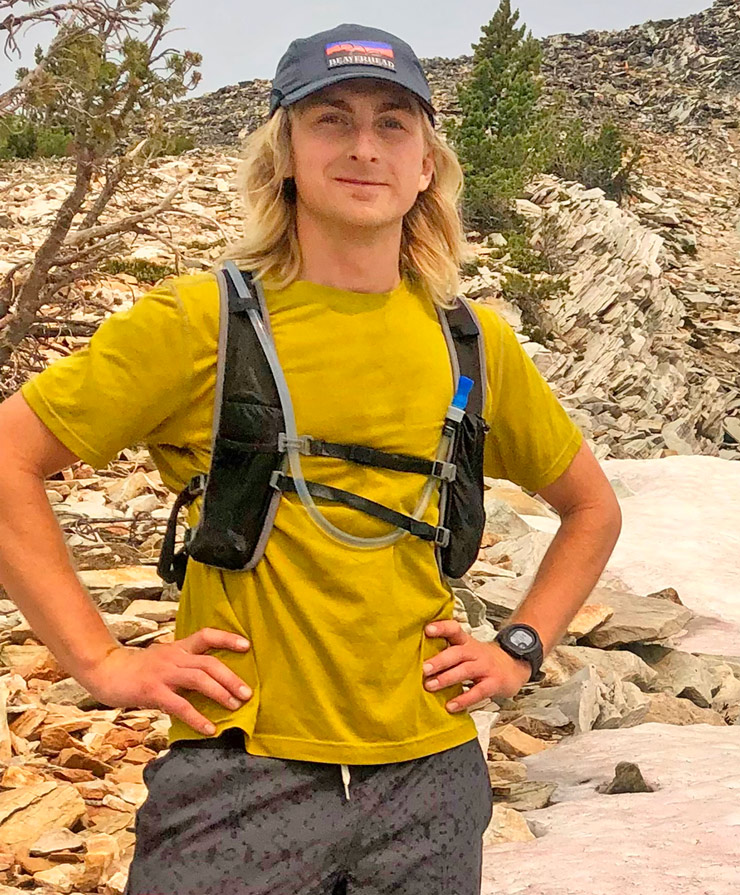
1 September 2022
Stephen Cooke joins the lab for his doctoral research. Stephen's record combines scientific training ranging from evolutionary psychology to field ecology from his Honor's Thesis research at the University of Montana with an equally impressive record as a wilderness guide, ultramarathon runner, a wildland firefighter and an accomplished musician. Stay tuned...
24 February 2022
To Ukraine — Victory!To Russia — Freedom!
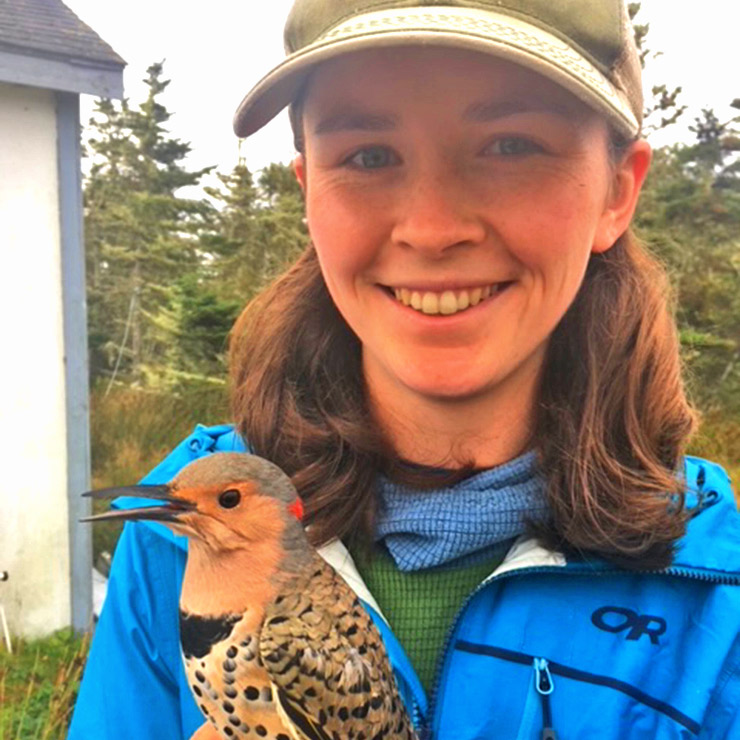
15 February 2022
Lauren Michael joins the lab to run our NSF LTREB house finch study sites in Arizona. Capitalizing on exceptional field and research experience in avian biology, with papers and projects on everything from shorebirds to passerines, Lauren will start her graduate work in the fall.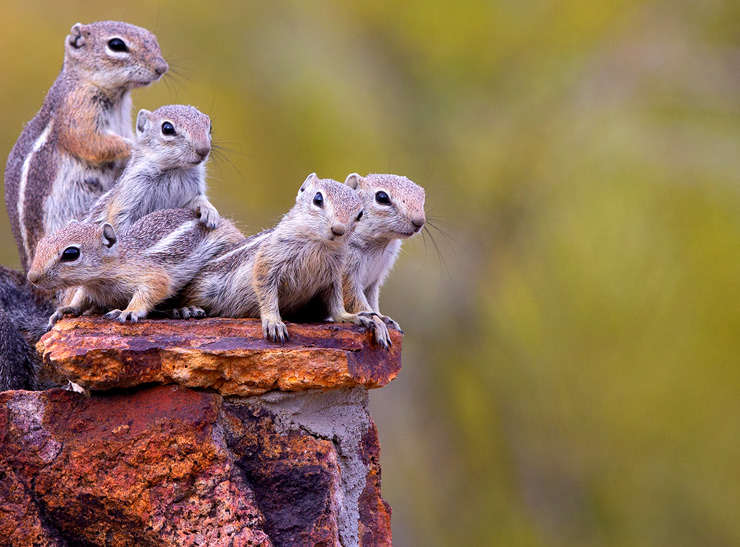
10 January 2022
Our photo makes another striking poster (our eighth!!) for 33rd annual Undergraduate Biology Research Conference. At the conference Ali Shaikh presents his research on protein interactions in chromatin remodeling and Alex Badyaev receives 2021-2022 Outstanding Mentor nomination.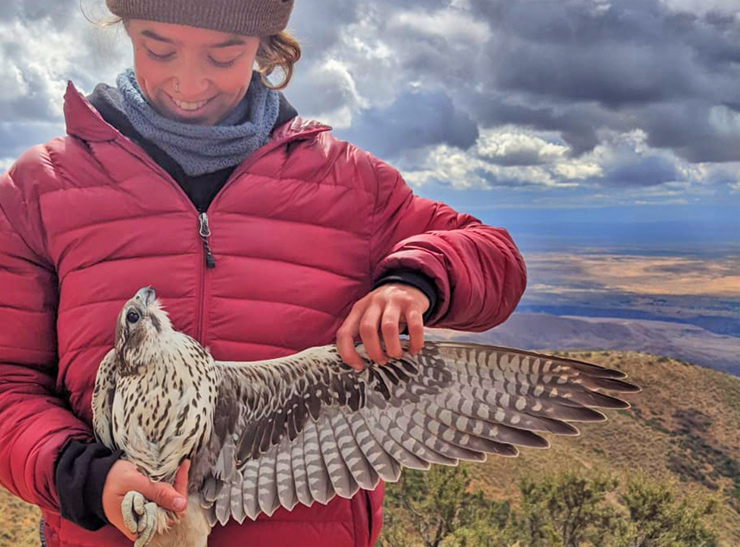
23 July 2021
After running our LTREB research sites in Montana and Arizona for the last three years, including, most importantly, The Vigilante House Finch site, Sarah Scott - field biologist-extraordinaire - is awarded an NSF grant "Explaining variation in epidemiology of the emergent disease" and joins the lab.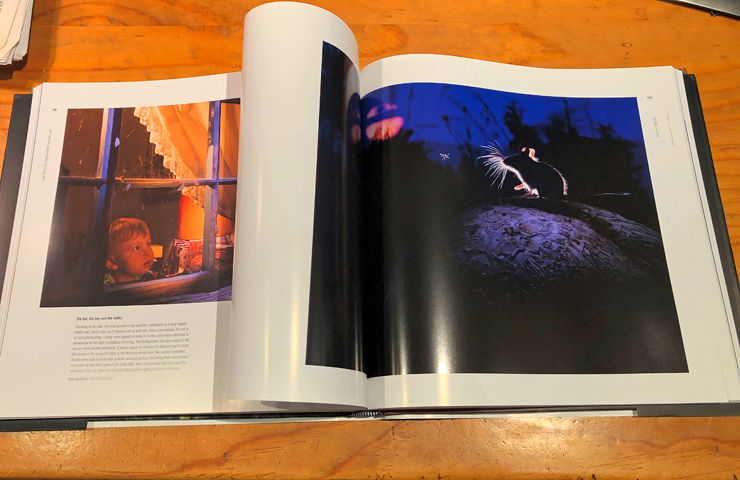
10 February 2021
Two (!) of our photos (1, 2) somehow slipped into the exclusive collection of "200 most memorable pictures from more than six decades of nature photography", alongside some legendary masters, featured in a landmark volume "How Wildlife Photography Became Art" by incomparable Roz Kidman Cox. "These are images that have the power to affect how we feel about the natural world and therefore how we treat it." writes Sir David Attenborough. In other photonews, our documentation of the latest recorded mating of grizzly bears along Rocky Mountain Front is out in Montana Outdoors and our photo once again becomes a UBRP Conference poster (our seventh!).
30 January 2021
James Mouton and Renee Duckworth integrate advances in developmental neurobiology and psychiatric pharmacology to show that maternal steroid metabolites have direct neuro-modulatory effects and shape the development of neural circuitry of crucial behavioural traits.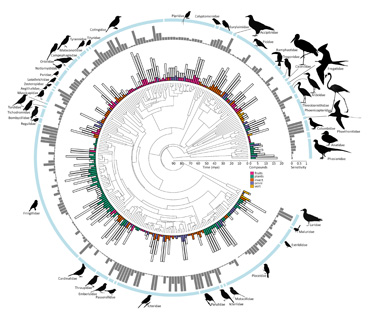
6 December 2020
Sir Ronald Fisher warned us in 1930 that "Natural selection is not evolution", seconded by Prof. George Williams' dictum, in 1966, that “Evolution takes place in spite of natural selection”. So we looked into this and found that both were correct. New paper on contribution of historical continuity vs local optimization to evolution. With Dr. Erin Morrison (NYU). Details to come...
13 October 2020, 20:30 BST
At a spectacular Award Ceremony at Natural History Museum in London, watched live online by 35k international viewers, Alex Badyaev receives a Winner title (his fourth) in Wildlife Photographer of the Year competition, for the photo that Chris Packham calls "the first selfie to win the world's most prestigious wildlife photography contest". HRH The Duchess of Cambridge presented the awards, invoking memories from 2014: 1, 2, 3, 4. Coverage in CNN, Newsweek, The Guardian, National Geographic, The Atlantic, Science Focus, GEO, Telegraph, Lonely Planet, Evening Standard, HuffPost, MSN, others).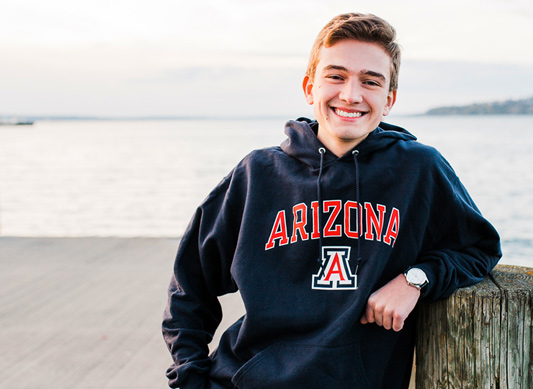
1 October 2020
Max Gleason is awarded the 2020 Tindall Biodiversity Research Fellowship to study concordance between physical and biological processes guiding transcriptional activity in development. With the main goal to assess "whether morphogenic processes harbor patterns of variability that facilitate species adaptability when environment changes".
26 June 2020
Biological systems famously operate "at the edge of chaos", just inside of regular regime, which enables them to be robust and adaptive at the same time. How these transitions occur is rarely studied, for a good reason. In a new, frightingly massive lab study (nature.com/s41467-020-16938-7), we went looking for the specific mechanisms by which boundaries of adaptations become bridges between them during evolutionary transitions. More here.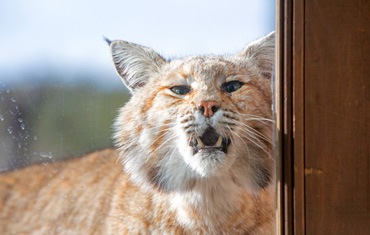
15 May 2020
Peeking through the windows of the designated Shelter-in-Place as Sonoran Desert spring rages on. The 2020 Lockdown Gallery is here.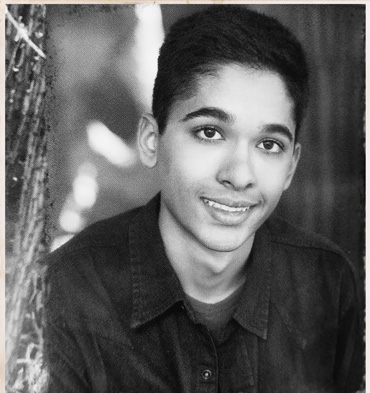
10 May 2020
Ali Shaikh joins the lab to work on processing and analysis of IHC histological images and cell cultures. Having worked at the interface of medical and biological fields, Ali brings much needed skills in histological slide analysis.
10 April 2020
Before SARS-CoV-2 arrived to Tucson, who would have known that our lab people have such amazing scripting skills and technical talents to switfly set up flawless remote data acquisition from the lab equipment and uninterrupted data collection and analyses. Still the lockdown cancelled celebrations of the top awards some of us got this year... If you are missing an uplifting commencement speech, given once before at an Arizona’s university also in the middle of both pandemics and an economic crisis, here is one for you.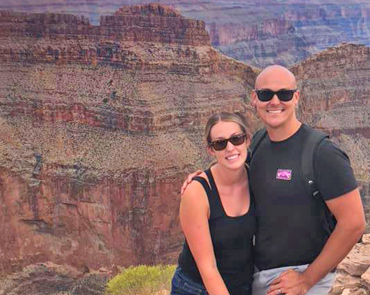
16 March 2020
"Every year, Department of Ecology and Evolutionary Biology selects one graduating student with an exceptional record of accomplishments in science for its Outstanding Senior Award. It is our honor to announce that the winner of The 2020 Award is Cody Lee !"And with that Cody, who, among many other things, has singlehandedly set up the lab’s workflow for the analysis of thousands of complex IHC images across platforms, enabling us to develop antibody protocols in real time, will move to his new position in the Leadership in Medicine for the Underserved Program at MSU.
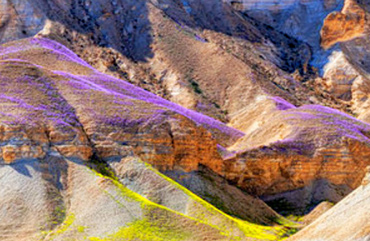
10 March 2020
A lecture course on "Control Theory in Evolution and Development" at The 2020 Camp Evolution coincides with the Out-Of-Control spring bloom in Israel.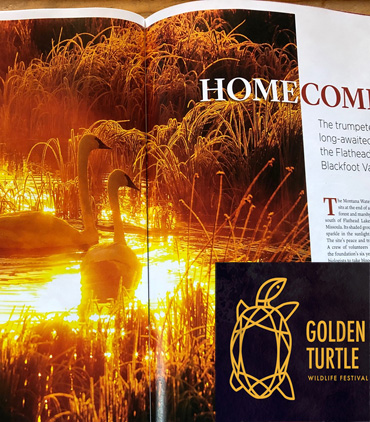
11 February 2020
Our photoessay illustrates Montana Outdoors' feature on successful reintroduction of trumpeter swans across Montana - the program to which the Lab contributed from its beginning in 2005. Members of the previous Cabinet of the United States hang our photo of the First Brood in their White House offices... See "From nameless swamp to the White House in 10 days".And in other news, Alex is invited to judge the 2020 Golden Turtle Wildlife Festival — "the largest international eco-educational project, bringing together photographers, designers and artists celebrating the beauty of the wildlife."
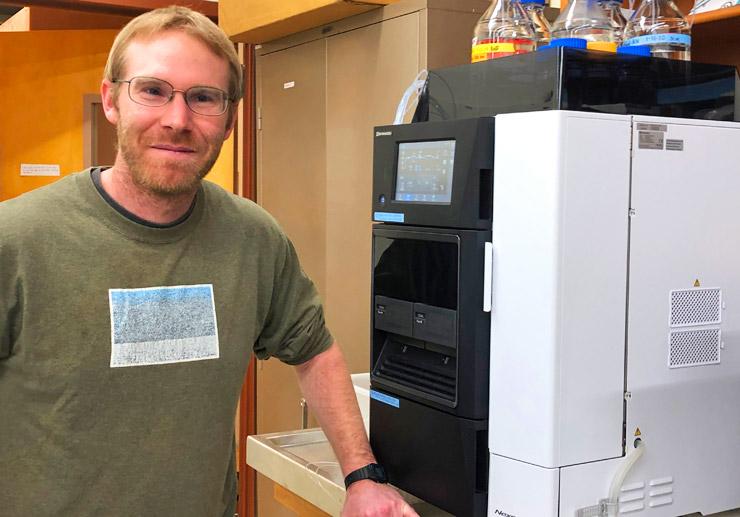
10 January 2020
Dr. James Mouton joins the lab as G.G. Simpson Postdoctoral Fellow. Having studied avian natural histories across the world , James brings expertise and diverse perspectives on life history evolution. And considerable technical skills to capitalize on the lab's newest UHPLC setup to investigate previously unaccesible endocrine aspects of this evolution. James is the seventh fellow in the George Gaylord Simpson Postdoctoral program.
20 December 2019
An attempt to further develop a new perspective on evolution at IST Winter Colloquium in Vienna, in preparation for lectures at 2020 Camp Evolution in Israel and an upcoming book.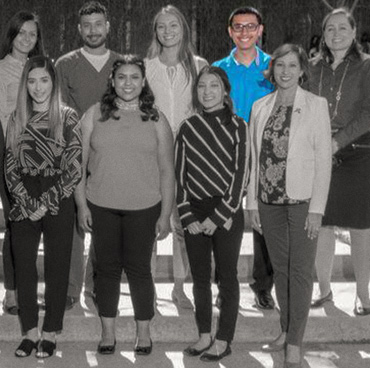
10 October 2019
Omar Puebla – here with his current FRONTERA (Focusing Research on the Border Area) team joins the Lab as a Research Assistant on the NSF's LTREB house finch evolution project. Omar brings an exceptional experience of animal care, most recently with Bio5, and rather unprecedented record of community leadership. To pick just one example, he is the current President of UArizona’s Chapter of Society for Advancement of Chicanos/Hispanics and Native Americans in Science (SACNAS) and represents Arizona’s chapters, nationally and internationally, at SACNAS congresses.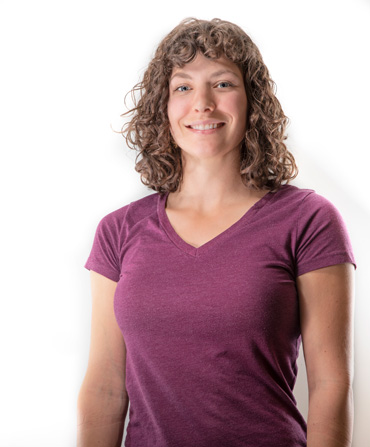
1 October 2019
Kaitlyn Gahl joins the lab as a Lab Manager and Research Specialist. Graduate of universities in both Bozeman and Great Falls and Montana native, Kaitlyn brings with her unique, first-hand familiarity with our numerous study sites across The Last Best Place, as well as advanced lab techniques and field biology skills.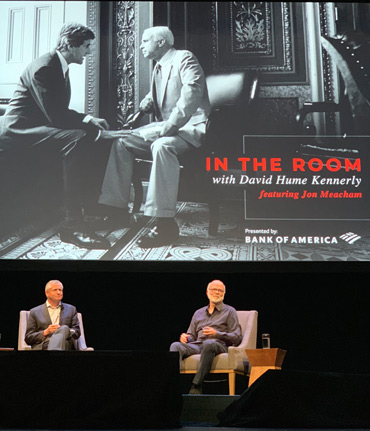
11 October 2019
An extraordinary evening with two Pulitzer Prize winners: Jon Meacham and David Hume Kennerly to mark an acquisition of Kennerly Archive by our Center for Creative Photography. Kennerly's photos define our vision of recent history. Here with three other living legends.
15 July 2019
As a logical culmination of an exceptional fieldwork record ranging from banding Peregrine Falcons in Greenland to researching flycatchers in Arizona Sarah Scott joins the Lab to run NSF LTREB sites in western Montana and, most significantly, The Vigilante House Finch site that celebrated its 25th field season this year.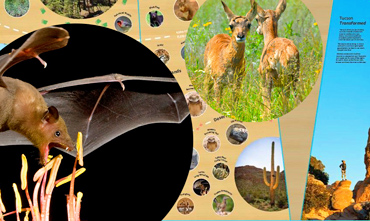
15 June 2019
The City of Tucson selects our photos to illustrate new "Nature" exhibit in the Visitor Center in the Historic County Downtown Courthouse. The Arizona-Sonora Desert Museum auctions three of our large format archive prints, including award-winning Midnight Climber, in their 2019 fundraising gala "Sonoran Nights".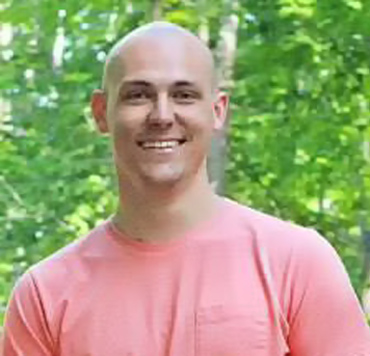
30 May 2019
Cody Lee joins the Lab to develop advanced image analysis protocols of gene expression in avian cell cultures. Cody brings top skills and unique blend of expertise in this topic having worked as both imagery analyst for US Air Force (collecting and analyzing multi-sensor imagery and geospatial data in active missions), and, subsequently, as a research assistant in molecular genetics labs, focusing on bacterial gene isolation and amplification.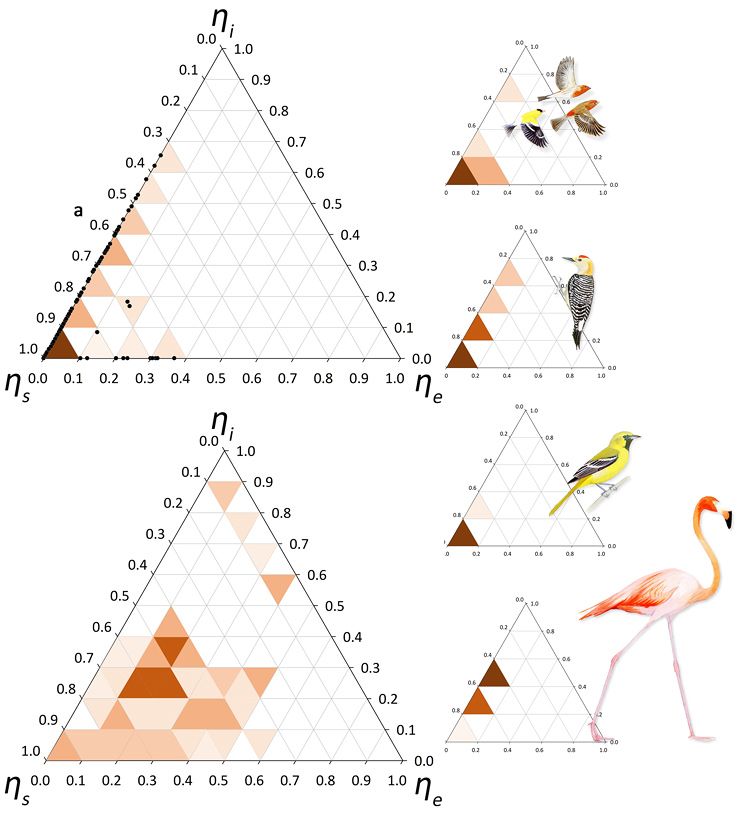
10 April 2019
"Movements between adaptive zones, caused by changes in external dependencies, should lead to faster evolution, whereas staying within adaptive zones should lead to stasis, for the same reason", thought one of our next-door colleagues at the University of Arizona. So we decided to write a paper (nature.com/2UoRcJ4) to check if he was right and also to reveal the mechanisms that produce these patterns.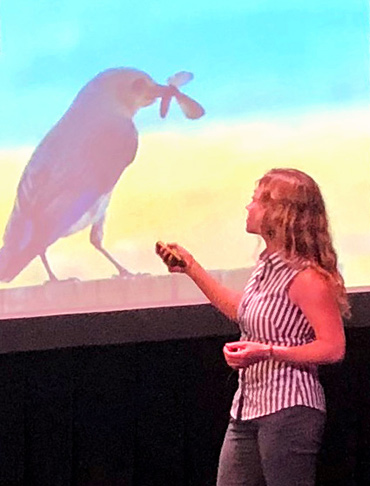
1 April 2019
Ahvi Potticary wins both best paper and best poster awards (1 , 2) at Evolution Evolving conference in Cambridge, including for collaboration with the lab on historical scaling of induced adaptation.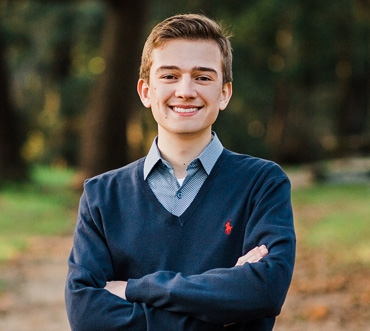
21 January 2019
Max Gleason joins the lab to work on a project using IHC to derive cell lineage hierarchies in ongoing adaptive diversifications. Max is a Regent Scholar, a recipient of an outrageous number of Honor Roll awards, and, in his free time, a Historian of the National Honor Society.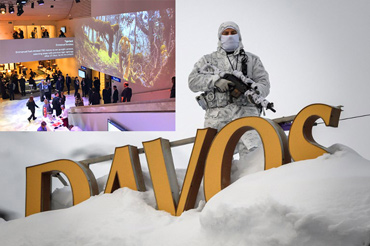
16 January 2019
Wildlife Photographer of the Year Exhibit travels to the World Economic Forum’s Annual Meeting in Davos, Switzerland to be seen by global top decision-makers during a four-day programme focused on environmental sustainability, highlighed by Dr Jane Goodall and Sir David Attenborough.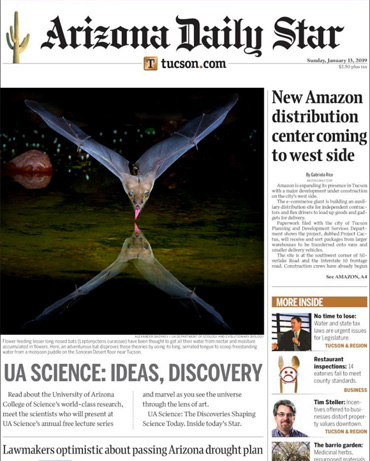
14 January 2019
Our lesser long-nosed bat's "Crossing Theories" piece is the frontpage of Sunday's Arizona Daily Star — the state largest newspaper. This is our fifth (e.g., #4, #3) cover with the newspaper. The original photo is here.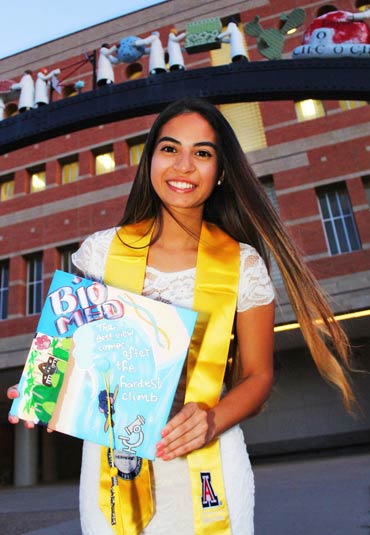
5 December 2018
Fatima Bravo joins the Evolution in the Last Best Place Project as Research Specialist, bringing with her an array of molecular biology skills, as well as experience in their biomedical applications.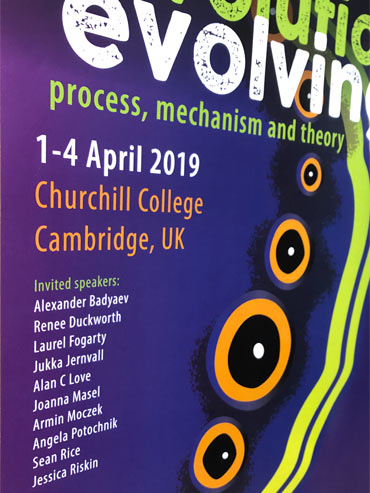
1 December 2018
Plenary at Evolution Evolving conference in Cambridge, UK, 1-4 April 2019. Our posters arrived...
5 November 2018
Course "Ecofisiología del Comportamiento Animal" at Universidad Autónoma de Tlaxcala in Mexico, 18-24 February 2019. Our posters arrived...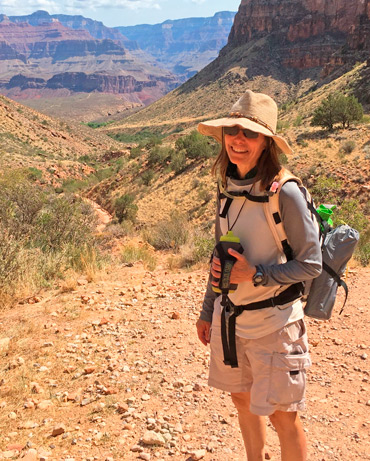
20 October 2018
Kimberlie Burns - a former head of the Histology Core Facility at UNC School of Medicine (1989-2018), and an expert on histotechnology of cells growth, immunohistochemistry, and transmission and scanning microscopy joins the Lab as a Research Specialist.
18 October 2018
“A combination of stability and fragility, of rest and motion, of ice-cold geometry and organic grace, of blissful calm and impeding danger - this image recalibrates your senses and makes you pause and think -- says competition's judge and previous winner Alex Badyaev at the Wildlife Photographer of the Year stunning Awards Ceremony in London's Natural History Museum." (From MSNBC, Newsweek, Independent, DCW, DW, others).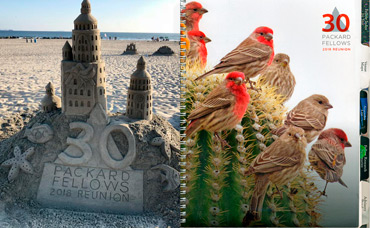
10 September 2018
Our finches cover the program of spectacular 2018 Packard Fellows Reunion Conference, including our presentation on the evolutionary cycles of functional controls in metabolic networks.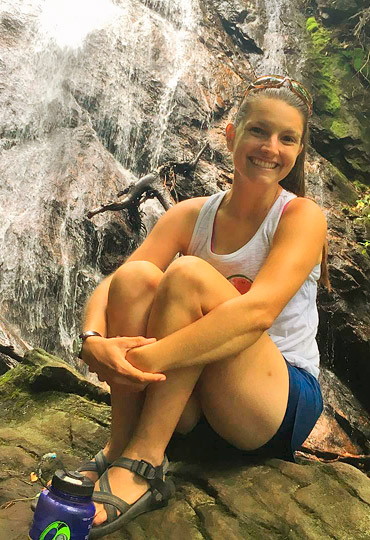
23 August 2018
Sarah Britton begins her doctoral research in the Lab. Sarah brings with her extensive experience in studies of avian life history evolution, most recently from her Master's thesis at Western Carolina University, as well as a wide-ranging record of outdoor leadership programs from Wyoming to Tanzania.
10 July 2018
The Lab announces availability of 2019 G. G. Simpson Postdoctoral Fellowship -- established to honor Prof. Simpson's work at the department -- to support a productive and creative scientist to work on outstanding evolutionary problems of their own choosing. Details and application are here.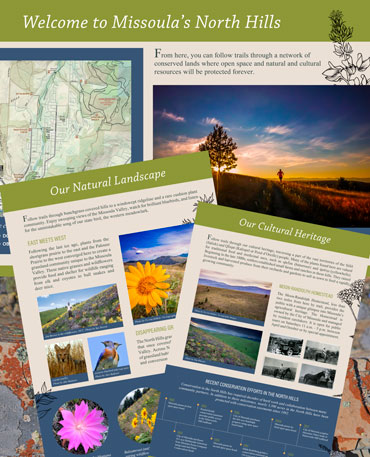
8 July 2018
The City of Missoula installs our new photo and information interpretive signs on Waterworks Hill -- one of the most heavily used trailheads in town. "The new signs communicate the natural and cultural heritage of the area, the conservation history, and the importance of stewardship".
7 July 2018
Adam Welu, whose five-year research tenure in the lab included everything from the study of age-related polymorphism in enzymatic networks to a project on ontogenetic tissue transformation accepts a position in the School of Medicine of Saint Louis University.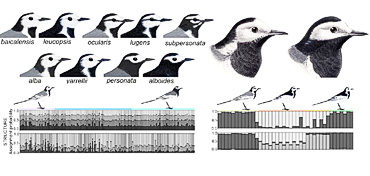
5 July 2018
In a new paper postdoc Georgy Semenov shows that extensive combinatorial evolution of plumage in white wagtails coexists with little genetic differentiation.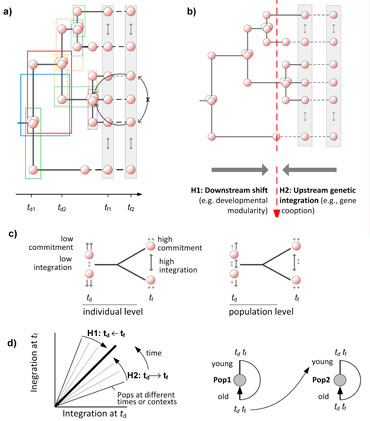
1 July 2018
The Lab is awarded a new NSF Evolutionary Processes Cluster grant (a.k.a. "Evolution in the Last Best Place Project") to study the evolution of cell lineage hierarchies in ongoing adaptive diversifications.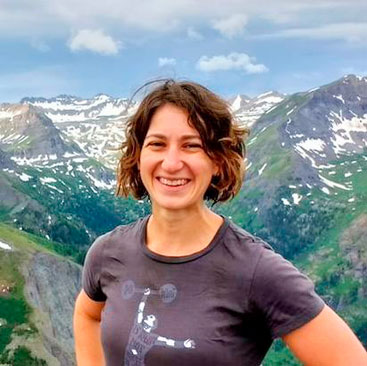
20 May 2018
Laura Stein, whose undergraduate research in the Lab garnered essentially all known awards at this University, including a delivery of the 2009 Commencement Address, accepts a professor position at the University of Oklahoma, making her the fifth lab undergrad to become an academic faculty.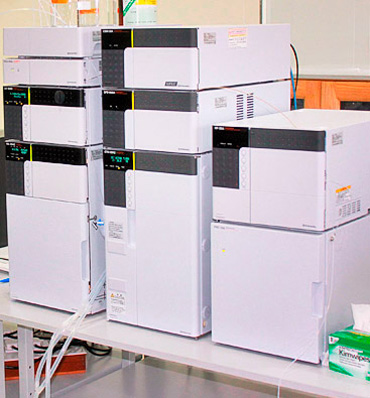
1 May 2018
The Lab is awarded a Major Instrumentation Grant to acquire a state-of-the-art, ultra-high performance liquid chromatography (UHPLC) system – one of the most powerful new tools in analytical chemistry. The machine detects compounds in a parts-per-trillion range, runs x30 faster than a regular HPLC clunking next to it, simultaneously identifies dozens of compounds, and comes with a box of Kimwipes for when PIs get hysterical watching it do in an hour what took a month of hard work before.
28 April 2018
Xander Posner, aka The Master of the Hopcroft-Karp Algorithm scripts for the network controllability projects, begins his graduate research, appropriately in biostatistics and epidemiology, at UC Berkeley.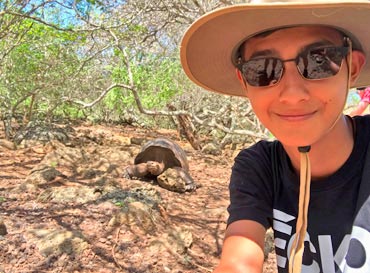
8 March 2018
Vincent Stannus joins the lab to conduct his Senior Research Project on within-species morphometric transformations of avian eggs. Vince is the fifth Tucson/Oro Valley high school senior to conduct his senior research in the lab.
4 March 2018
A wonderfully intense week of judging Wildlife Photographer of the Year competition in London's Natural History Museum, alongside some of the legends in nature photography.
21 February 2018
In a new paper we show that subsampling of preexisting biochemical network is a dominant mode of avian carotenoid evolution over the last 50 million years. The discovery empirically illustrates a fundamental requirement of organismal evolution – historical continuity of past and present functional associations.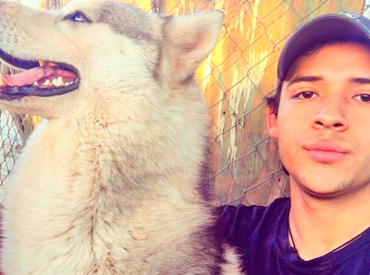
9 February 2018
Andrew Vizzerra - a recipient of 2017 President’s Award for Educational Achievement and UA's Excellence Award - joins the Lab to study morphometric consequences of the evolution of egg shell porosity. The project, which is also a part of Caitlin Davey's thesis, is based on the dataset of thousands of samples linked by multigenerational pedigree and spanning one of the largest climatic gradients possible within a species' distribution.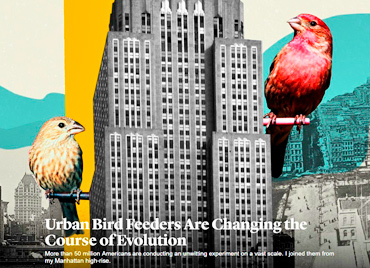
1 February 2018
An award-winning science journalist and writer Emily Voigt writes about our research in The Atlantic's essay on the effects of bird feeders on beak evolution in house finches.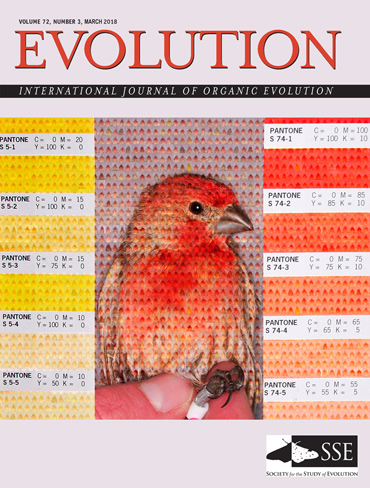
15 January 2018
In a new Evolution paper we characterize the evolution of a mechanistic link that enables metabolic systems to retain and install previously adaptive responses - the very basis of dynamic restoration of a phenotype under an environmental change. 589 ornament census photos of 74 free-living house finches whom we followed very closely from birth to death for this study compose an average male on the cover.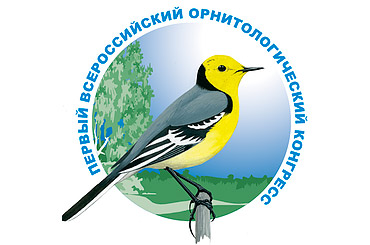
12 January 2018
Alex will present Plenary Lecture "What determines tempo and mode of avian coloration evolution?" at The First Russian Ornithological Congress -- the inagural congress of its kind to take place there in the last 25 years.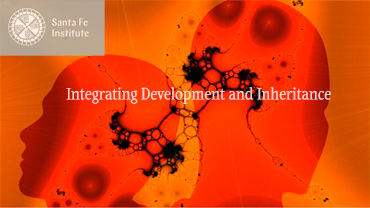
5 January 2018
The lab will present a synthesis of new ideas on the Control Theory of Evolution at Santa Fe Institute Workshop "Integrating Inheritance and Development" alongside an exceptional lineup of speakers working in the field .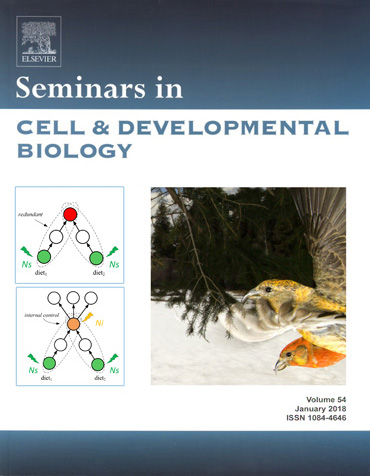
15 November 2017
For evolution to proceed, the maintenance of a currently adaptive configuration of traits must not preclude the incorporation of innovation in the same traits. In a new paper we propose a novel mechanistic principle that clarifies how local adaptation can be reconciled with continuity of evolution.
10 December 2017
Five Valleys Land Trust presents Kristi DuBois -- western Montana’s non-game biologist -- with our Trumpeters in the Mist plaque during a ceremony marking her retirement after a long career with Montana Fish, Wildlife, and Parks. Now Kristi shares our trumpeters with both the former US Department of Interior Secretary and US Fish and Wildlife Service Director (1, 2) See "From nameless swamp to the White House in 10 days".
24 October 2017
With this postcard, The Company of Biologists becomes the 4th publisher to advertise its subscription with our photos in the last three years, following The Royal Society/ Proceedings B (avian embryo sucking thumb), ESEB/Journal of Evolutionary Biology (finches on the Moon), and Mountain Press Publishing Company (elk herd in Missions and howling coyote).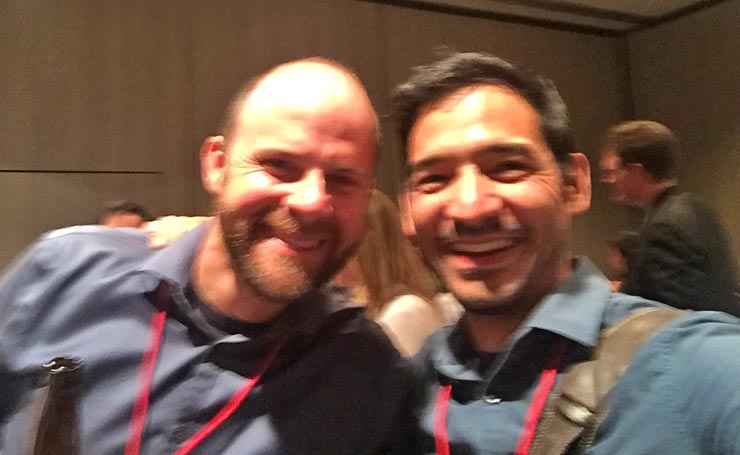
15 October 2017
Dr. Jerod Merkle and Dr. Kevin Oh (R) at the 2017 WS Meeting in New Mexico, 13 (!) years since Kevin supervised Jerod's first research project on the Lab's house finch studies in Tucson. Then, onto projects on wolves, bears, bison, and well beyond...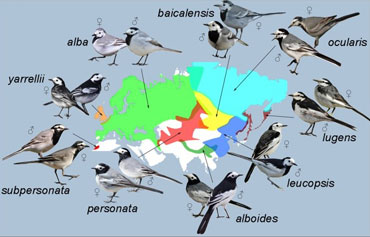
5 October 2017
Postdoc Georgy Semenovand collaborators analyse the genomic and morphological structure of a hybrid zone between White Wagtail subspecies in a new Molecular Ecology paper.
18 September 2017
Alex receives The 2017 College of Science Distinguished Career Teaching Award. The (in)famous ECOL 330: Evolution of Animal Form and Function continues to live up to unrealistically "high expectations of learning, creativity, discussion, and discovery" cited in the 2007 Distinguished Teaching Award. In 2018, the course will be significantly restructured.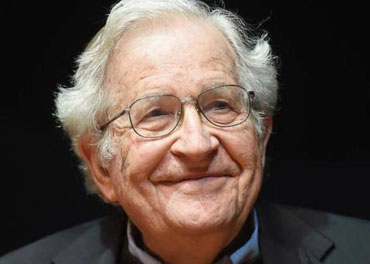
1 September 2017
Not exactly the lab news, obviously, but exciting that Noam Chomsky — the most cited scholar in history, a founder of several fields in cognitive sciences, whose list of theories has to be alphabetized in biographies — joins our faculty at the University of Arizona. Now instead of getting up at dawn to stay in line with 6,000 others to secure a seat at his lectures on Universal Grammar or the Origin of Language on his previous Tucson visits, one can just walk down the hallway...
26 August 2017
The Lab presented seven papers at the evolution meetings this summer, including work on the evolution of feather microstructure, coevolution of flux and topology in metabolic networks, ontogenetic resolution of the "curse of dimensionality" in beak microevolution, and an invited talk on network controllability at Network Biology symposium at XVI ESEB Congress in Groningen. The ESEB Congress also featured the Plenary Address by Renee Duckworth.
22 August 2017
Alex is invited to judge the Wildlife Photographer of the Year competition — "the oldest and most prestigious competition of its kind, attracting tens of thousands of entries from professional and amateur photographers from across the globe". In 2017, he will also continue to judge (for the third consecutive year) The Royal Society Science Photography competition that now attracts several thousands submissions ranging from microimaging to astronomy.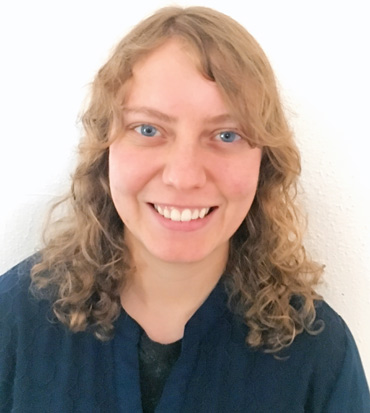
20 August 2017
Melissa Durham joins the Lab to study microevolution of avian carotenoid networks. National Honor Society inductee (for two consecutive years...), Melissa brings with her an unusual combination of background in physics, engineering, and biology.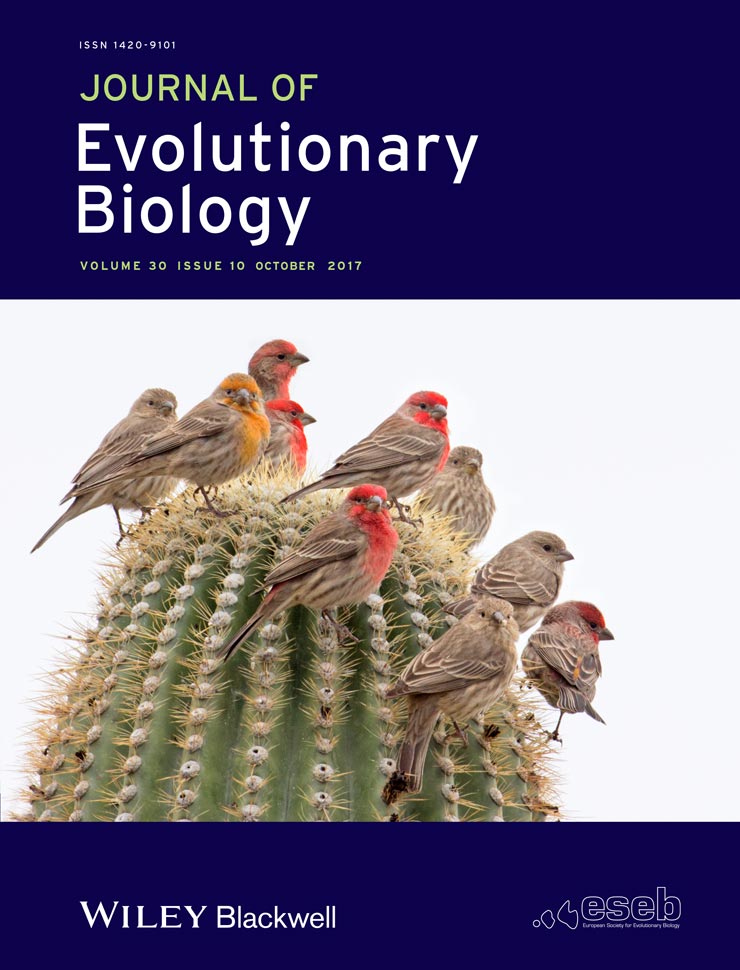
27 June 2017
A new cover paper in Journal of Evolutionary Biology reports unexpected diversity in metabolic network structures in a wild bird population and argues that evolutionary diversification and local adaptations in carotenoid metabolism depend more on the gain or loss of enzymatic reactions than on changes in metabolic flux within a network structure.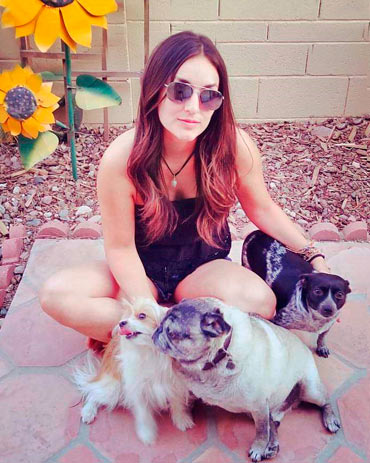
1 June 2017
Gillian Griffen joins two projects: examining the evolution of metabolic networks across recently established populations of house finches in Montana and the evolution of feather microstructure in relation to carotenoid deposition. In addition to her interests and background in biology, Gillian has built an extensive and successful career in business ownership and management.
18 May 2017
Erin Morrison receives The 2017 Outstanding Scholarship Award from the Department AND is named a 2017 Darwin/Wallace Fellow! Jesus...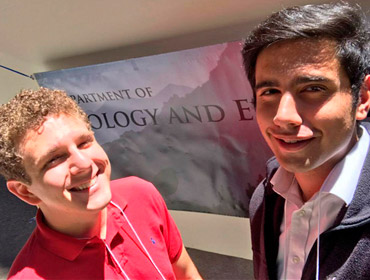
24 April 2017
Jakob Abtahi (right) pictured here with Xander Posner, received 2nd Place Prize for his poster "Precise adaptation without loss of adaptive potential: An example from avian beak evolution".
4 February 2017
Our bobcat inserting itself into one of the most celebrated mutualistic interactions in Sonoran Desert is the frontpage of Arizona Daily Star — the state largest newspaper. This is our fourth (e.g., #3) cover with the newspaper. The original photo is here.
19 March 2017
A year after winning most of the Department's top research awards, Sarah is now awarded NSF's GRFP for her proposal "Colorful pigments: Analyzing the evolution of avian carotenoids" and will continue her doctoral research in Julia Clarke's Lab in UT Austin.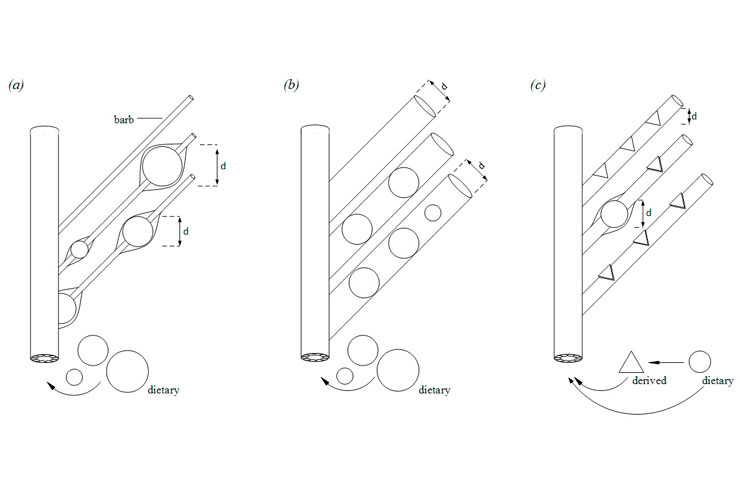
16 May 2017
Genetic assimilation might be ubiquitous in the evolution of diet-dependent animal coloration a new study reports. In Am. Nat. with Ahvi Potticary and Erin Morrison. Summary is here.
5 January 2017
California Academy of Science's bioGraphic publishes our account of the differences between human inventions and evolutionary innovations. The feature, syndicated under everything from "River Nymph takes on Aviation Industry" to Flight Night (Discovery Magazine) to Nightime Acrobatics (Atlas Obscura) describes the evolution of the novel way of flying.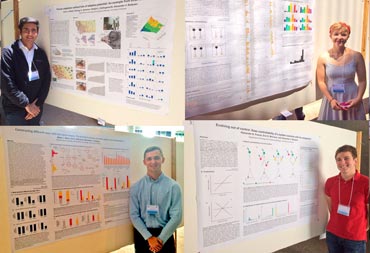
16 May 2017
The Lab presents four posters at the 2017 EEB Undergraduate Research Symposium. Adam Welu presented a summary of this Honor Thesis (defended on 5 May 2017) on "The biochemical basis of within species color polymorphism". Jakob Abtahi talked about his current work: "Precise adaptation without loss of adaptive potential". Caitlin Davey discussed "Metabolic divergence of ecologically distinct taxa" analysing data from nearly 300 species, Xander Posner talked about the evolution of controllability in complex directed networks — the Lab's Next Big Project.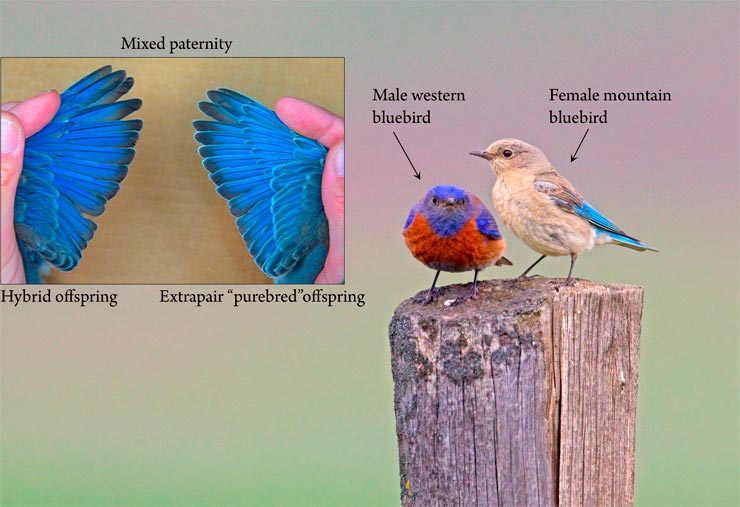
10 May 2017
Postdoc Georgy Semenov in collaboration with Renee Duckworth, argue in a new Am. Nat. paper that ecological succession is a frequently overlooked, but important context for hybridization.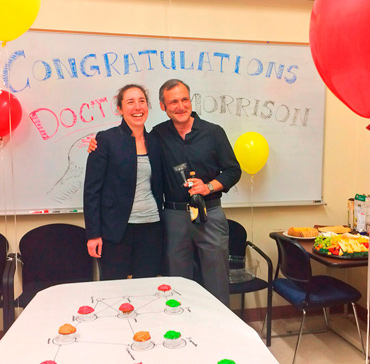
22 February 2017
Erin Morrison successfully defended her dissertation "Exploring the deterministic landscape of evolution" in front of a standing-room-only audience. Prof. Sergey Gavrilets served as an opponent. Dr. Morrison will now continue her research as a postdoctoral fellow at Sackler Institute for Comparative Genomics and American Museum of Natural History in New York.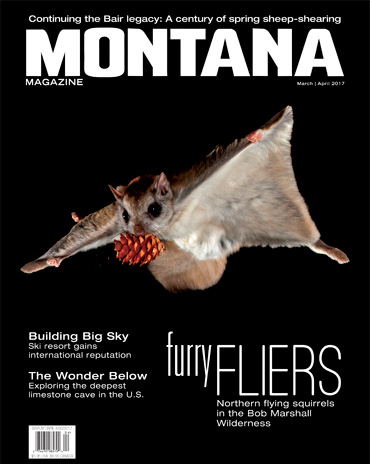
15 March 2017
Our cover of the 2017 March/April issue of Montana Magazine highlights the main feature on novel biomechancs of flying squirrel's flight. According to the publishers, it is the most popular issue of the last several years.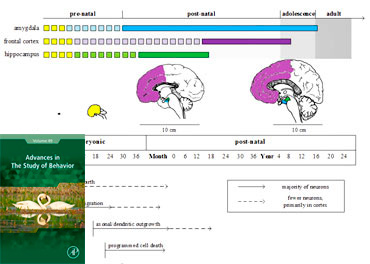
15 January 2017
Developmental channeling of structural neurological trade-offs is central to the origins of adaptive behavioral complexity, according to new paper in Advances in the Study of Behavior. With Renee Duckworth and Ahva Potticary
1 January 2017
Jakob brings his interest in cellular and molecular biology to the Evolution in the Last Best Place project, investigating ontogenetic transformations in beak tissues during population diversification in Montana's house finches.
